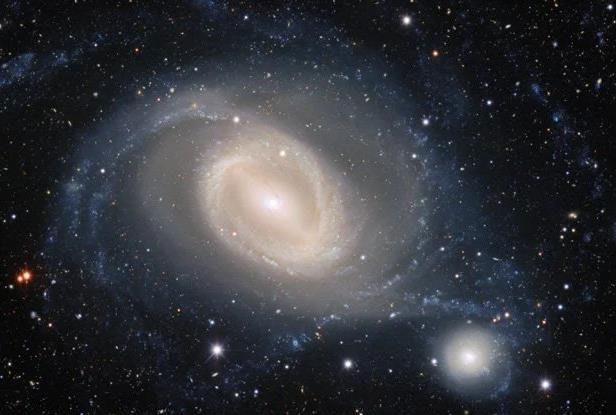Events that occurred in the galaxy containing Earth billions of years ago have been vividly recreated by the two galaxies NGC 1512 and NGC 1510.
The Victor M. Blanco 4-meter telescope located in Chile has captured a rare moment when the dwarf galaxy NGC 1510 is gradually “entering the lion’s mouth.”
It is on the verge of colliding with NGC 1512, a much larger spiral galaxy, and the inevitable outcome is that NGC 1510 will be engulfed, its material merging into the larger galaxy.

The moment two galaxies are about to collide, where the larger galaxy will swallow the smaller one – (Photo: DES)
According to Science Alert, this is a classic example of the galaxy merger process: galaxies that are far apart in the universe continuously move and sometimes collide. This can result in complex and violent interactions when two galaxies of similar size collide and gradually merge, or it can be a complete engulfing when a large galaxy collides with a smaller one.
This has happened many times in the past of the Milky Way, the galaxy that contains Earth. With a predicted diameter of about 100,000 to 180,000 light-years, the Milky Way is a “monster” among galaxies.
To achieve its current size and number of stars, the Milky Way may have swallowed at least 16 smaller counterparts, as previous studies have revealed.
The moment captured by Blanco acts like a time portal, allowing people on Earth to look directly into what once happened to the “monster” that contains Earth. In the future, the Milky Way may not be as fortunate, as its next collision will be with Andromeda, a galaxy of comparable size.
According to SciTech Daily, the Dark Energy Camera (DECam) mounted on Blanco, a state-of-the-art device designed by the Dark Energy Survey (DES), a collaboration between the United States, Australia, Brazil, the United Kingdom, Germany, Spain, and Switzerland, helped capture this rare phenomenon.





















































